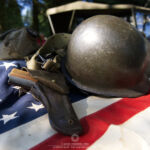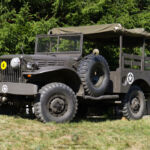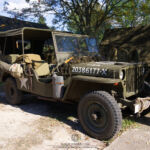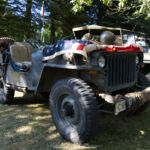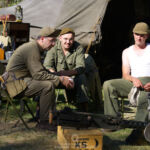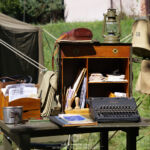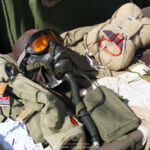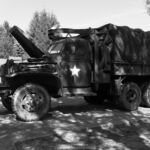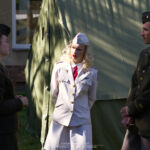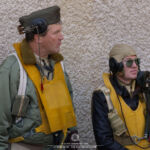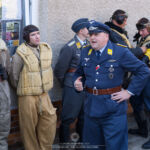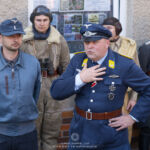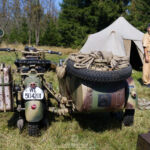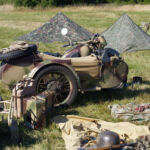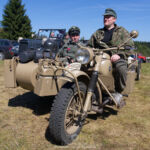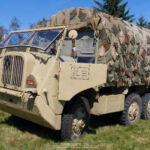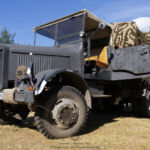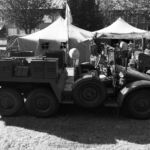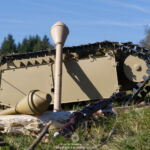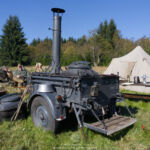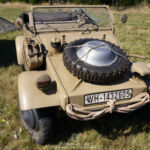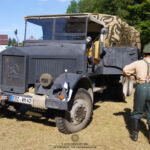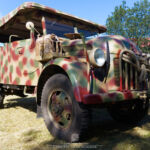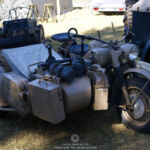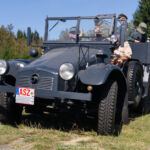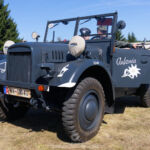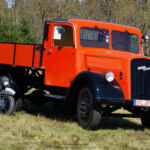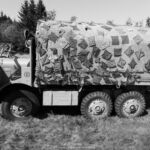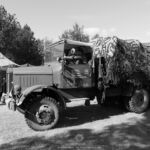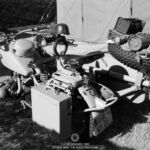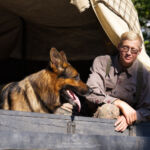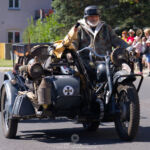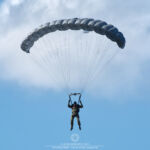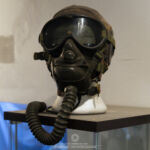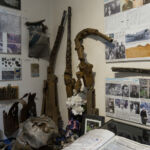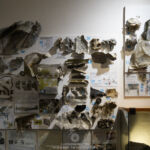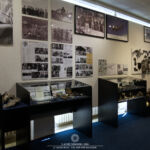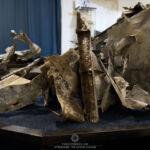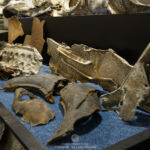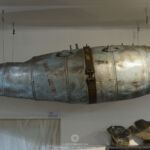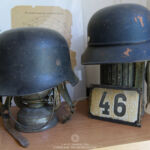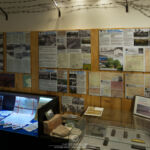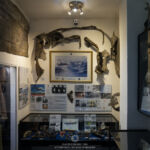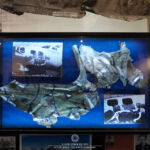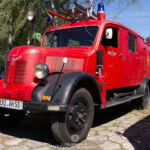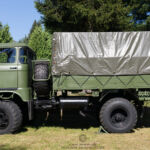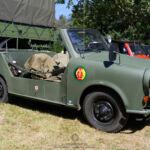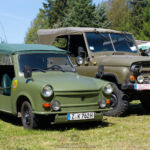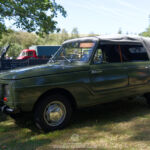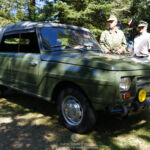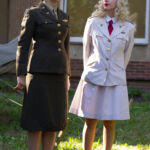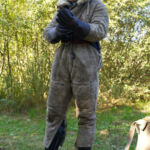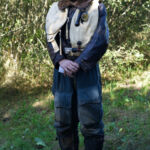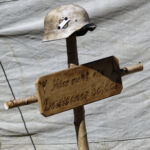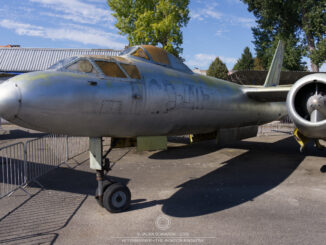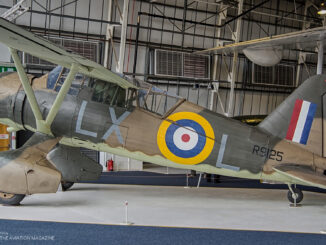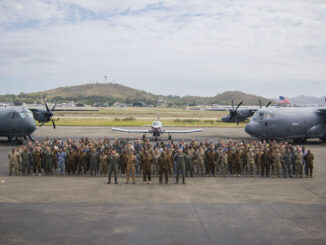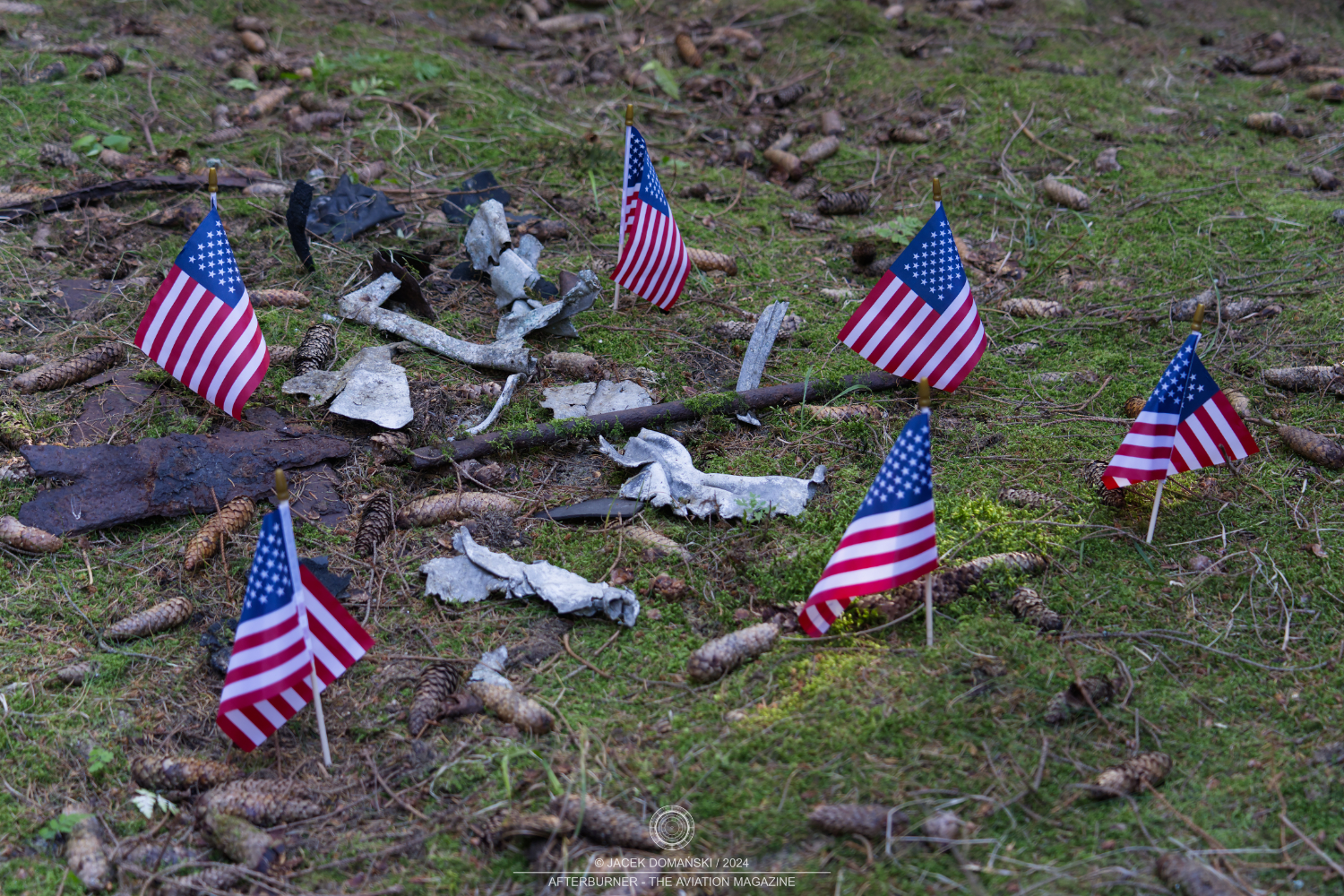 On 11th September 1944, a formation of B-17G Flying Fortress bombers from the 100th Bomb Group of the Eight Air Force USAAF, took-off for another mission against Germany. The target of the day were oil refineries located in the eastern part of the country, Ruhland, Böhlen and Brux (today Most, in the Czech Republic).
On 11th September 1944, a formation of B-17G Flying Fortress bombers from the 100th Bomb Group of the Eight Air Force USAAF, took-off for another mission against Germany. The target of the day were oil refineries located in the eastern part of the country, Ruhland, Böhlen and Brux (today Most, in the Czech Republic).
All the four squadrons composing the Group – 349th, 350th, 351st and 418th – were involved in this air raid. On its way to Germany and back, the American bombers were escorted by P-51D Mustang fighters of the 55th and the 339th Fighter Groups.
Around noon, when the USAAF formation was flying at high altitude over the former Czechoslovak-German border, the Allied aircraft were intercepted by a group of German Bf 109 and Fw 190 fighters of Jagdgeschwader 4 (the 4th Fighter Wing – JG4).
In a short time, a fierce air battle developed. Most of the combat took place over a small borough named Kovářská (German: Schmiedeberg), located in the Ore Mountains (German: Erzgebirge, Czech: Krušné hory), a mountain range lying along the historical border between the Czech and German lands.
More than fifty aircraft were shot down during the battle and many of them crashed in the close vicinity of Kovářská. The skies over the quiet mountain town became crowded with mid-air explosions, falling aeroplanes and parachutes. One of the B-17s crashed exactly in the middle of the city with her tail section strucking the school roof.
The air battle over the Ore Mountains lasted only about sixteen minutes. However, attacks on the American formation continued along its way back and not all aircraft that survived the battle returned to their home bases in the United Kingdom.
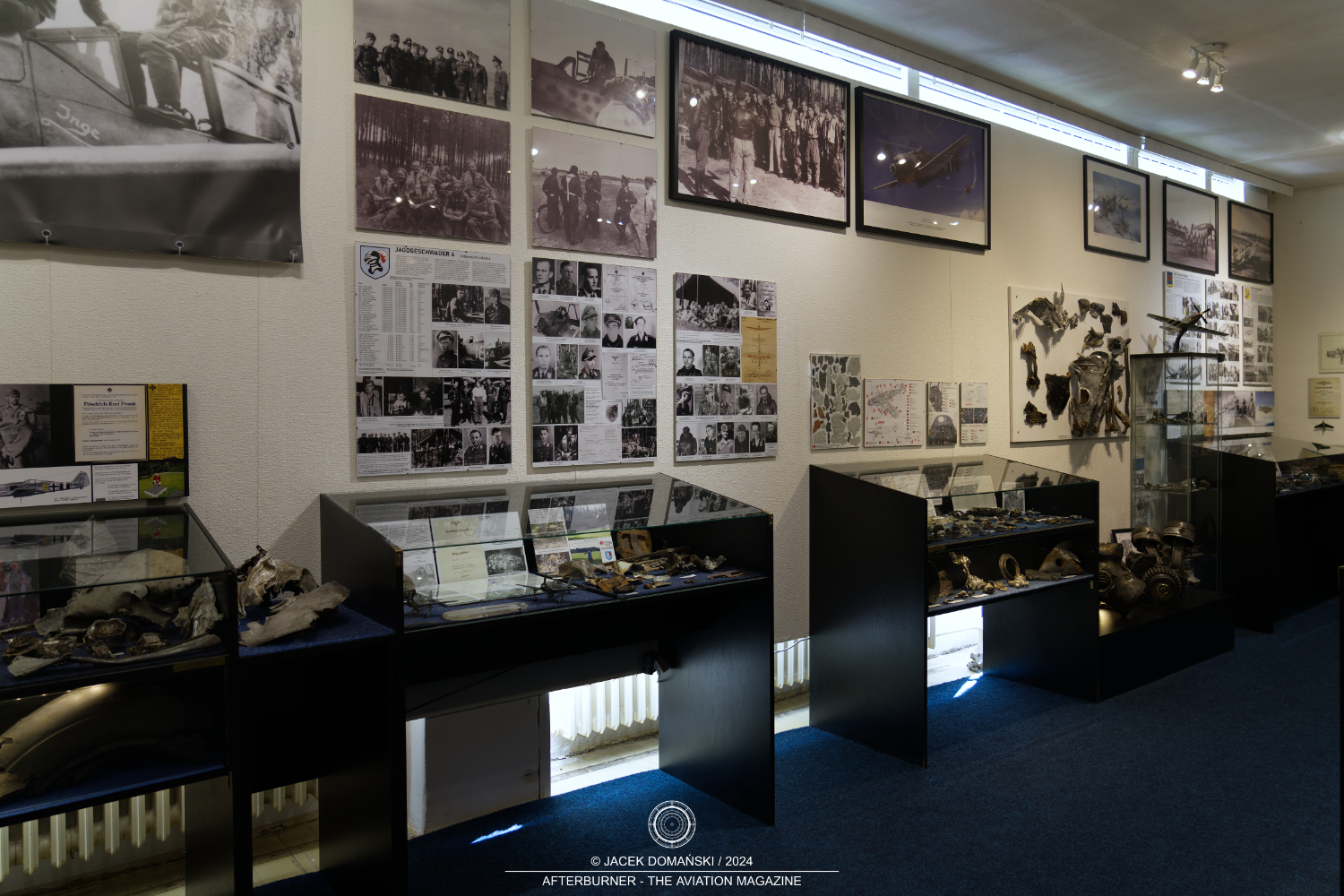
On that day of September 1944, the 100th Bomb Group lost fifteen B-17s, including the entire 350th Squadron and about one hundred airmen. The fighter escort lost four Mustangs, with three pilots killed in action and one captured as prisoner of war. The Germans reported heavy loses as well – thirty-eight fighters were shot down in the battle that meant more than fifty percent of the JG 4 force.
The aforementioned loses bear witness to the fierce struggle over Kovářská. The clash, commonly named the Black Monday over the Ore Mountain, was one of the two biggest World War II air battles that took place over the territory of the today´s Czech Republic (the other one occurred on 17th December 1944, with almost eighty aircraft shot down over the Morava region).
However, after the war, the battle slowly began to dim into obscurity. The Germans living in the area, including the eyewitnesses of the Black Monday, were resettled into Germany (as Kovářská was part of the so-called Sudetenland, inhabited primarily by Sudeten Germans). The new settlers from the inland who came to that remote corner of Czechoslovakia had no idea about the battle which happened there and, obviously, the socialist governments had no interest in bringing this part of the country´s history back to life.
For many years, only the remains of the American and German aircraft, scattered across the forests covering the Ore Mountains, were the silent witnesses of the history.
Situation began to change with the end of the Cold War, when searching for historical events, as well as aviation archaeology, became more and more popular. In the middle of the 1980s, the first informal research about the air battle over the Ore Mountains began, initially carried out by a group of history enthusiasts.
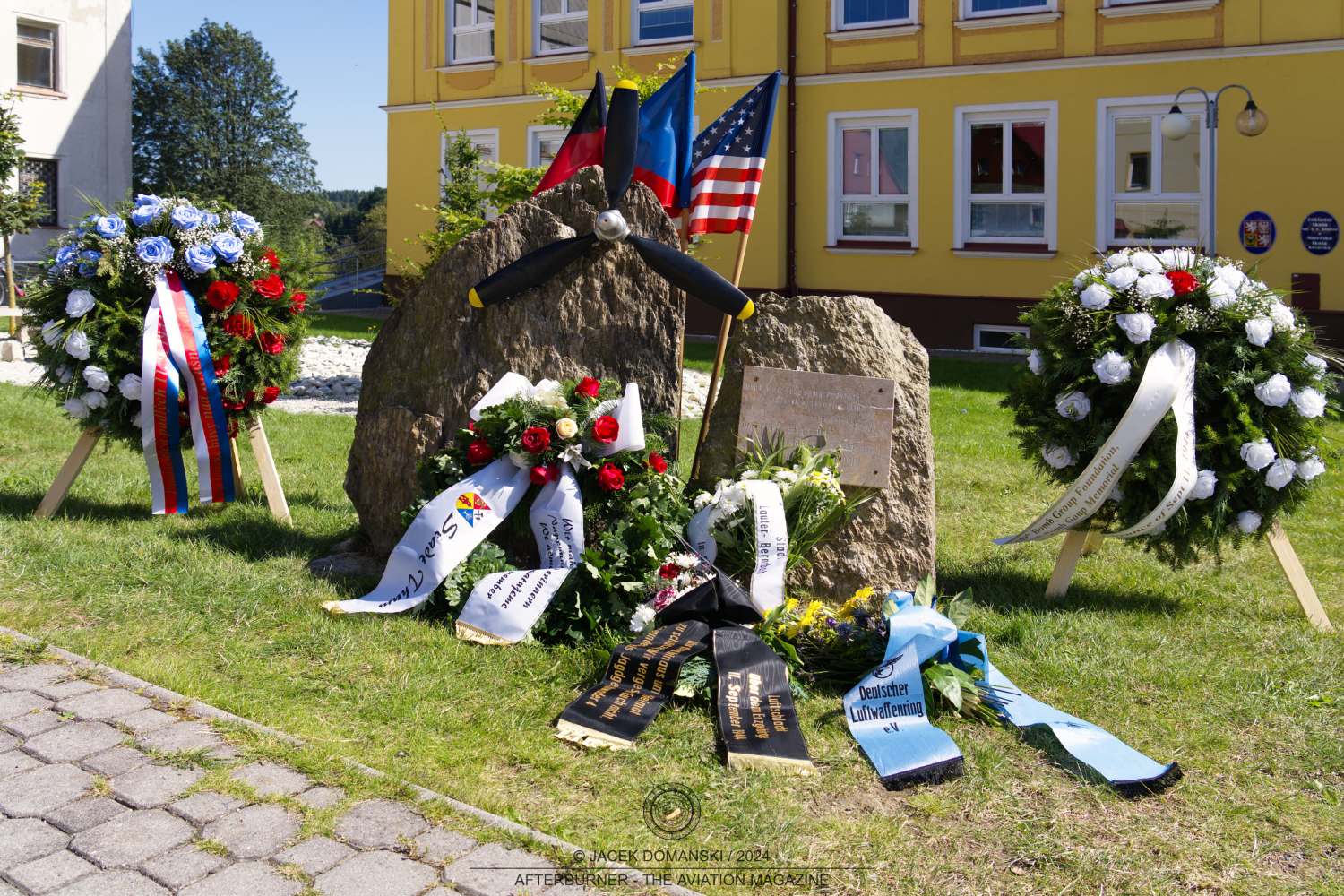
Within a few years, their activities became more and more professional and finally took the official manner. On 11th September 1994, on the 50th anniversary of the battle, a memorial dedicated to the fallen American and German airmen was unveiled in the centre of Kovářská. About two years later, the Museum of air battle over the Ore Mountains was established in the borough, with the Air Historical Association Kovářská, Slet Plzeň and the borough authority as co-founders. In September of 1997, the museum was officially opened for public.
The opening event was a four-day celebration, joined by the air battle veterans from both sides of the conflict. Anniversary meetings in Kovářská quickly became the annual tradition, usually honoured by presence of the Czech, American, German and British military authorities, the World War II airmen and their family members, as well as eyewitnesses of the Black Monday over the Ore Mountains.
In addition to the official commemoration ceremony held at midday and possibility to visit the museum exhibition, the anniversary celebrations were enhanced with several side events, such as lectures from the World War II history, presentation of re-enacting groups, parade of historical vehicles, plastic scale model contest and parachuting display, as well as guided tour to one of the crash sites from 11th September 1944.
Successively, the event at Kovářská attracted more visitors. Many of them arrived to the borough in their own classic vehicles which, although not related to the battle or even the World War II years, were also showcased during the event.
Regrettably, from year to year, there was less and less veterans participating in the event. Heinz Federwisch, the former German Bf 109 pilot, was one of the very last surviving participants of the air combat in September of 1944. He was a very frequent visitor to Kovářská but passed away in the mid-2014, as the last German aviator involved in the battle.
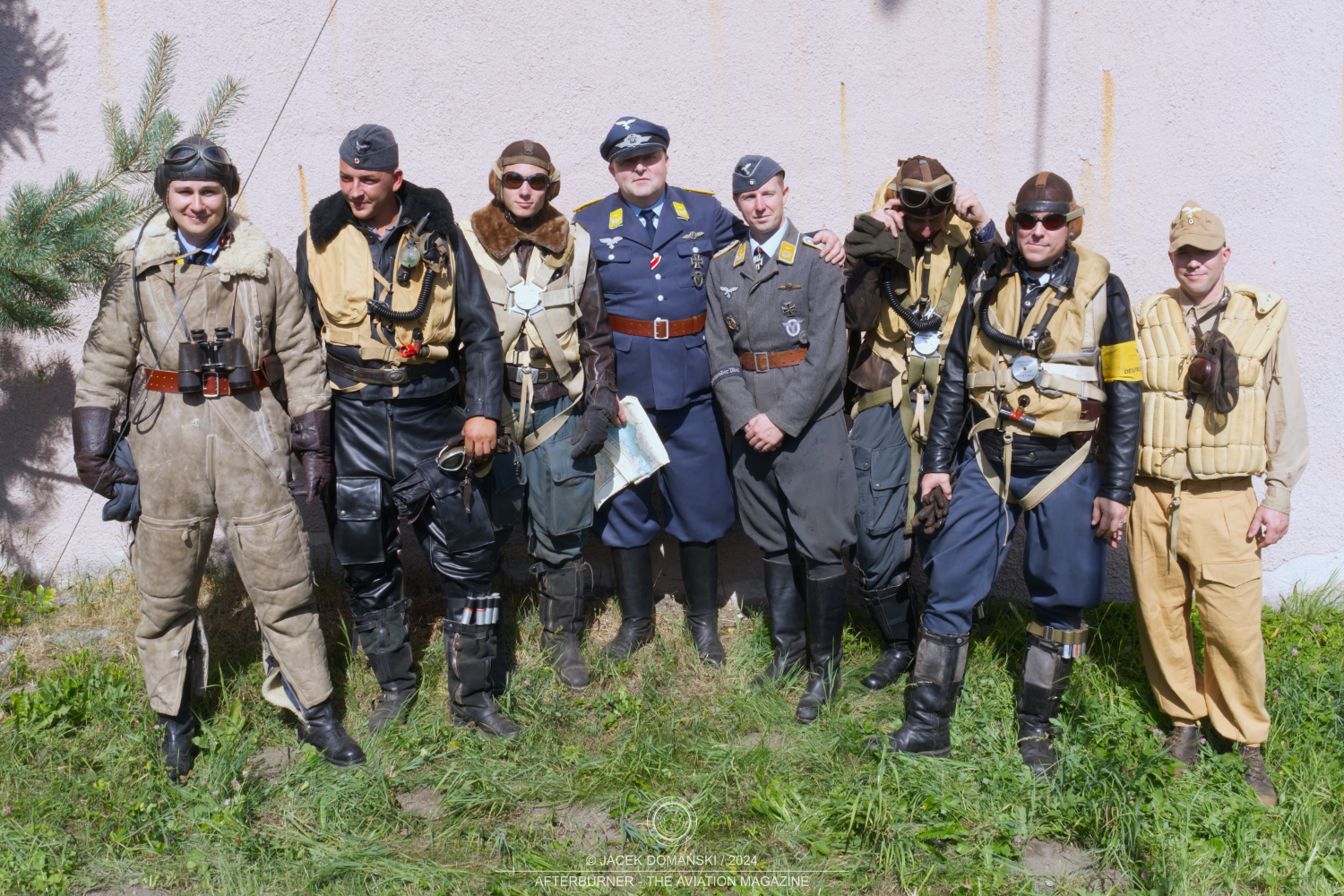
Although there were no more battle veterans to come, the annual commemoration events were still continued, with a short break in 2020 and 2021, caused by the pandemic restrictions.
On 7th September 2024, the event to commemorate the 80th anniversary of the air battle over the Ore Mountains was held in Kovářská. As usual, the main focus of the day was the official ceremony held at noon at the memorial of the fallen airmen. Nevertheless, and similarly to the previous editions of the event, the 80th jubilee was filled with plenty of sideshows.
Around the museum building, there were two re-enaction camps built, showcasing the Wehrmacht and the US Armed Forces. A few hundred metres away, another re-enacting encampment was located, this time focused on the Luftwaffe forces.
As usual, the event offered interesting lectures and presentations related to the World War II history. Firstly, there was a showcase of the US Army flight nurses, including a camp where the visitors could explore the story of Flying Nurses. The re-enactors from the Army Nurse Corps association presented details of the medical service on various theatres of the war and history of medical evacuation. There was also a dedicated lecture and uniform show.
In the afternoon, presentation of the Luftwaffe and the USAAF uniforms and personal equipment was organised, with detailed description provided by T. Líbenek and T. Posselt. Then, there was an audio-visual lecture about the air battle over the Ore Mountains, led by Jan Zdiarský, the director of the museum and the day was completed by ´Masters of the Air´ meeting – a discussion with Michael P. Fayley, the historian of the 100th Bomber Group and historical consultant of the famous movie series. All of the aforementioned events attracted great interest from the public.
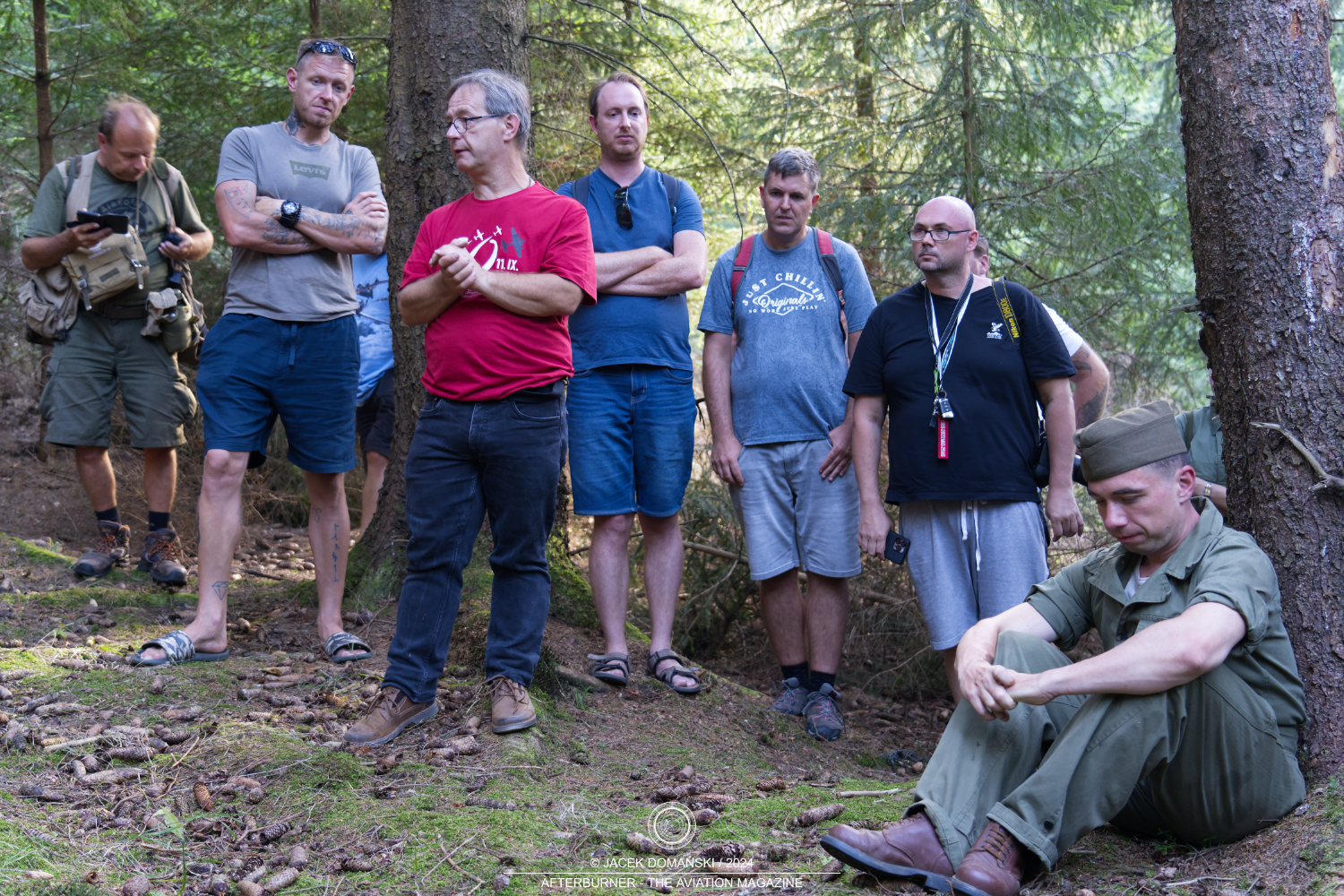
The commemoration event included also a guided tour to one of the crash sites from September of 1944. This time, it was organised to forest surrounding Velký Špičák hill, which was the place the air battle over the Ore Mountains hit the ground. Only three of ten airmen from the XR-J crew survived the battle. They managed to bail out safely and were taken POWs. The other six crew members were killed in action over Kovářská.
A short commemoration was held at the crash site, with presence of the crew´s family members, who arrived to participate in the 80th anniversary of the battle.
Other side events held on 7th September 2024 in Kovářská included the traditional plastic scale model contest, the annual parade of historical vehicles along the main street of the borough, as well as parachute jump display and the evening concert of Po-Po Trio.
It should be mentioned here that the aforementioned re-enaction groups arrived to Kovářská with several fascinating vehicles from the World War II years. In this way, the visitors to the event had an opportunity to see a collection of Jeep Willys MB vehicles, Dodge WC-51 and GMC CCKW trucks, VW Typ 82 Kübelwagen and Typ 87 Kommandeurswagen, Mercedes-Benz LG3000, Saurer M6, Mannschaftskraftwagen Krupp L2 / Krupp-Protze, Steyr 1500, Stoewer Typ 40 Kfz.1 and Opel Blitz, as well as a choice of BMW and DKW motorcycles.
One of the most interesting vehicles which could be seen in Kovářská was Mercedes-Benz Kübelsitzwagen Typ Stuttgart 260, used by the Reichswehr from 1929 on.
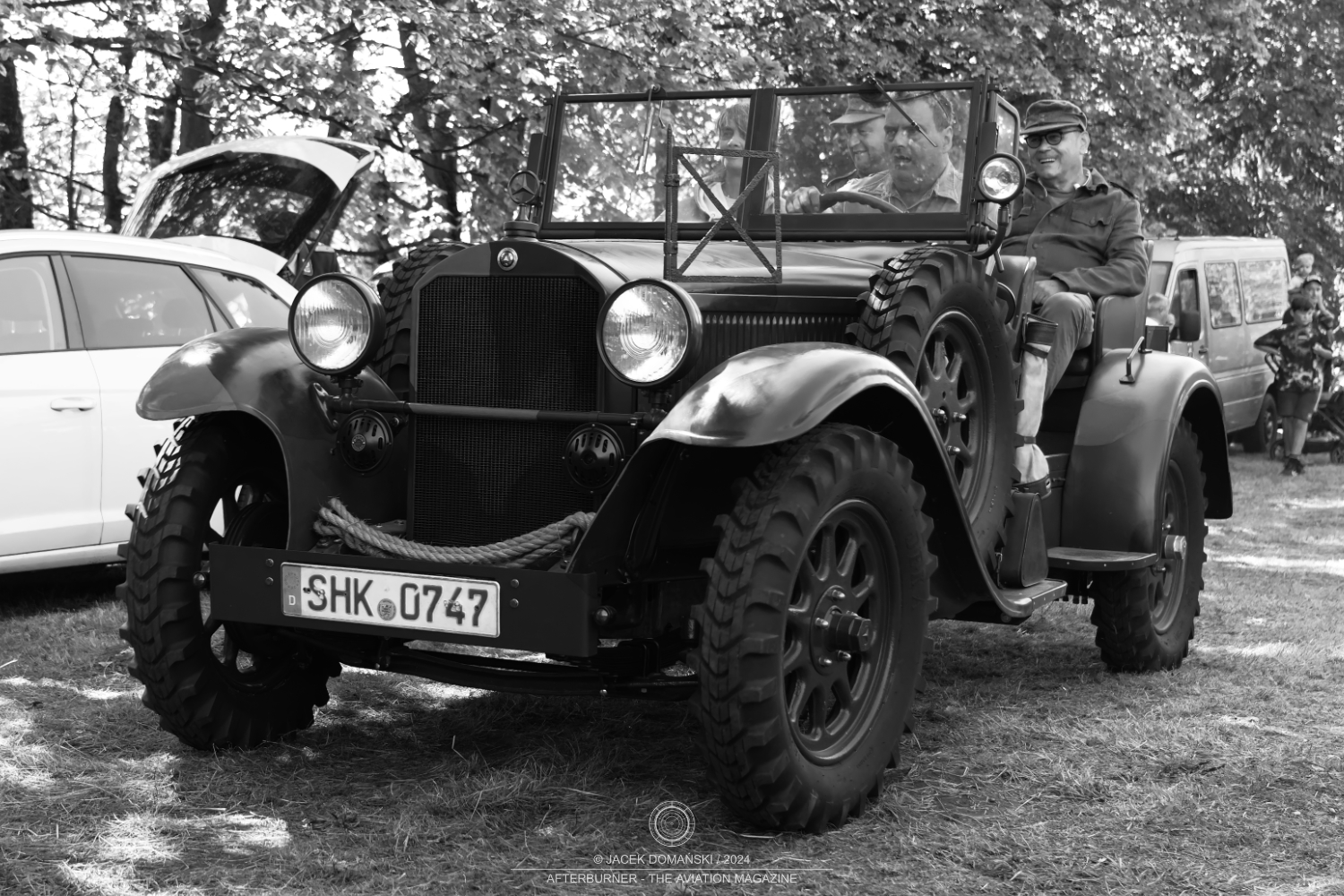
In addition to the re-enaction camps and equipment showcased there, the event in Kovářská attracted several owners of other historical vehicles, not related to the World War II years. A major part of them represented the automotive industry of the former East Germany, including military variants of Trabant and Wartburg personal cars, IFA military trucks, Robur bus, Barkas utility vehicles and Phänomen Granit 27 fire truck. Moreover, there was also a collection of UAZ 469 off-road light utility vehicles and other cars from the 1960s and 1970s.
Last but not least, the visitors to Kovářská had an opportunity to see the exhibition of the Museum of air battle over the Ore Mountains, which was available to public during the whole day.
Founded in 1996, as mentioned above, the museum holds a unique collection of items found at the various crash sites related to the air battle on 11th September 1944, as well as other German and Allied aircraft that were shot down in the Ore Mountains.
The exhibition provides an amazing journey through history, explains the details of aerial warfare in the World War II, aircraft and other equipment. The air crews participating in the battle are no longer anonymous as the museum gives insights into aviators who clashed each other over Kovářská, including their pre- and post-battle stories. There is also a special section focused on prisoners of war and the German POW camps. It should be also emphasized here that the museum is constantly growing, and new exhibition rooms are successively being opened to public with time.
Without any doubts, the Museum of air battle over the Ore Mountains is a recommended place to visit. And there is no need to wait for another anniversary – the exhibition is open to public on Saturdays, from 14:00 to 18:00 hours.
More images from the event:
